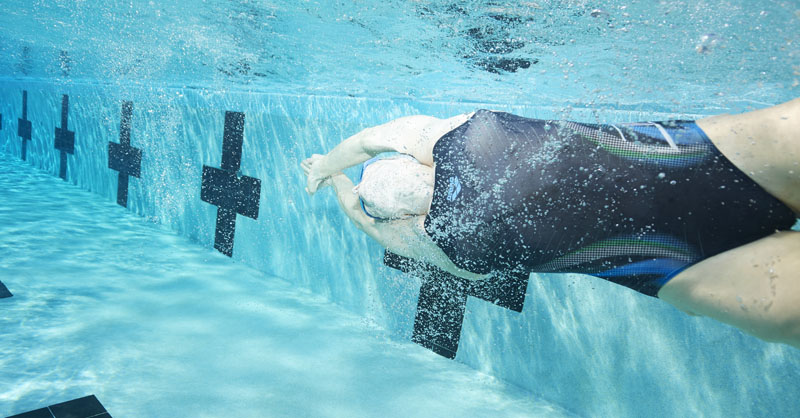People who have just started swimming often expect to improve more quickly than is really feasible. This inevitably leads to frustration, particularly when you cannot swim the number of laps you would like to or develop the kind of swim stroke you were hoping for. This is extremely common with newcomers to any sport and can often lead to people giving up physical exercise altogether.
All this is connected with our emotions, but it also about setting realistic goals in relation to our own ability and motor skills.
Why can’t I swim that well?
This is the question lots of us ask ourselves just after starting to swim. We inevitably compare ourselves to better swimmers, which can often be extremely frustrating. This can also depend on the methods our swim instructor employs to teach us the proper technique.
Good instructors realise that beginners have not had time to learn the right motor skills to swim properly, whichever stroke they are focusing on. In this respect, we know that verbal instructions need to be backed up by visual aids: observing and attempting to implicitly memorise is the most effective strategy for achieving the aspired standard of swim technique. The idea is to make all the movements constituting our swim stroke automatic. Learning to make these movements automatic takes time and lots of practice, as well as expert help.
Why can’t I swim as many laps as I would like to?
Quantity is something even less experienced swimmers use to assess their swim skills. Nevertheless, it is also a yardstick that can easily lead to frustration. To avoid this, it is extremely important to set realistic goals for your own ability, as well as being willing to train hard.
It is actually a good idea to set goals that are as ambitious as possible but within your reach. Lots of variables need to be taken into account in this respect: your motivation, current standard, the amount of time you have the training and, of course, the effects our emotions can have on physical exercise.
A healthy sporting environment can be judged by the relatively few people who give up. It is somewhere that offers carefully planned training geared to specific goals. For example, it would be unrealistic to expect an entire children’s or adults’ course to reach the same standard of technique at the same time. As much attention as possible must be focused on the individual. But that is not all, a sporting environment that encourages people to stay in the sport is also the kind of place where instructors allocate the appropriate amount of time to every single beginner, so that they can learn all the movements required for a technically-correct swim stroke.
—————
